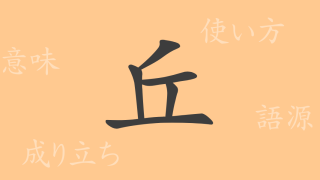The Japanese language, rich in character culture, boasts kanji that are particularly diverse in meaning and form. “阪” (ハン, さか) is one of the commonly used kanji, often seen in place names and describing geographical features, yet many may not know its underlying history and meanings. This article delves into the origins, meanings, usages, and common phrases related to the kanji “阪”, enriching our understanding of this character.
Origins of 阪 (ハン, さか)
The kanji “阪” dates back to ancient China. It is derived from a combination of “阜” (おか, hill) and “反” (そる, turn), originally representing slopes or inclined paths as a pictograph. Over time, its shape and meaning have evolved, stabilizing into the form used in present-day Japan.
Meaning and Usage of 阪 (ハン, さか)
“阪” primarily denotes slopes or inclines. It is used to describe topography and is especially common in place names in the Kansai region. For example, “大阪” (おおさか, Osaka) literally means “great slope” and is well-known as the name of a major Japanese city.
Pronunciation, Stroke Count, and Radical of 阪 (ハン, さか)
Understanding the pronunciation and structural components of “阪” is also crucial.
- Pronunciation: The on-reading is “ハン” (ハン), and the kun-reading is “さか” (さか).
- Stroke Count: 7 strokes.
- Radical: つちへん (土偏, earth radical).
Phrases and Idioms Using 阪 (ハン, さか) and Their Meanings
There are many idioms and phrases including “阪” in the Japanese language. For instance, “阪を登る” (さかをのぼる) literally means to climb a slope and metaphorically to overcome difficulties. Additionally, “阪急” (はんきゅう) means “steep slope” and is familiar as the name of a transportation system in the Kansai region.
Summary on 阪 (ハン, さか)
Through this article, we hope to have conveyed the multifaceted appeal of the kanji “阪”. Deeply rooted in Japanese place names, geography, and culture, this character continues to live in our language. By understanding the origins and meanings of “阪”, we can further deepen our comprehension of the Japanese language.

























